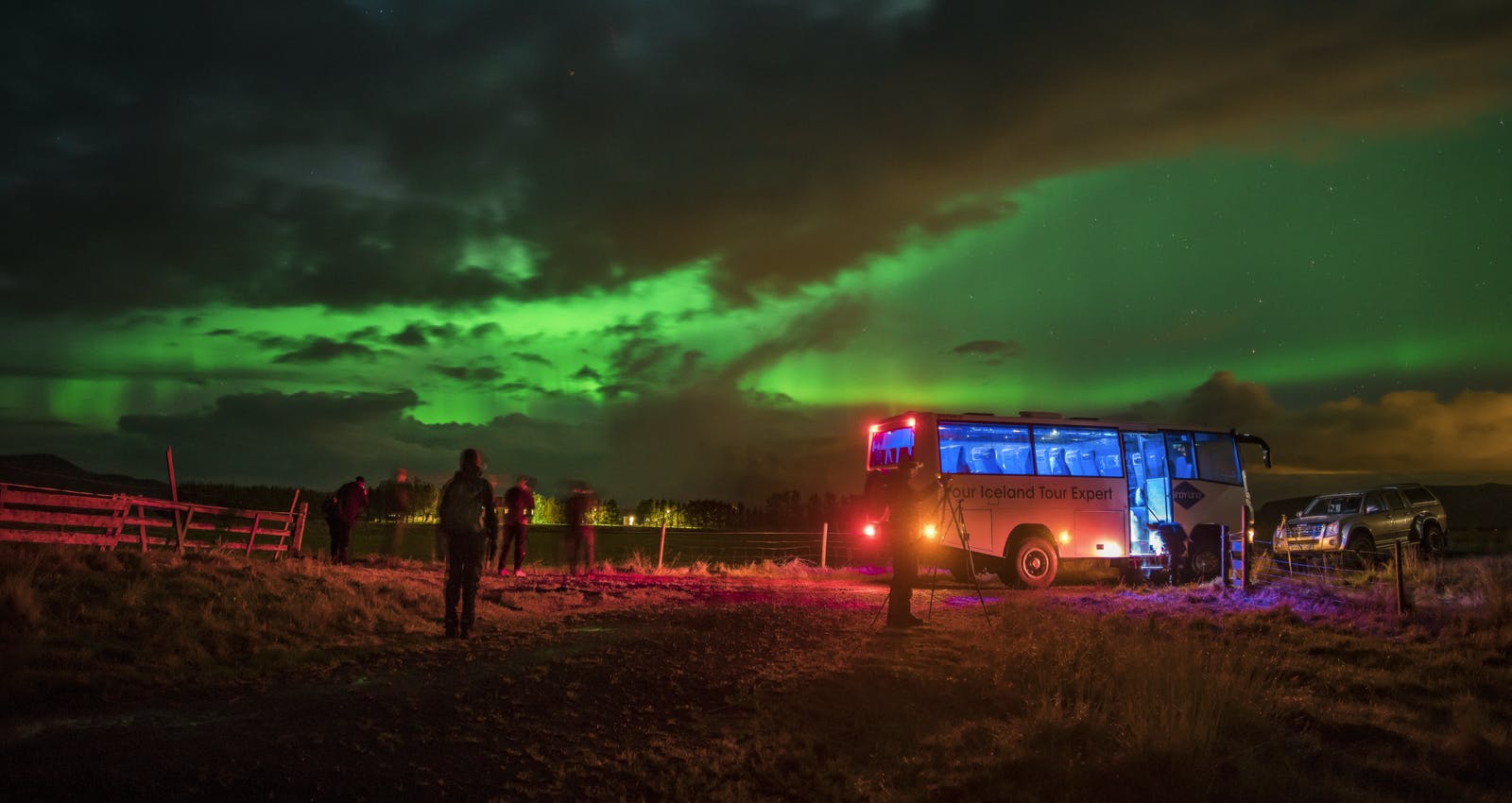
How to Read the Northern Lights Forecast
The northern lights are an elusive phenomenon caused by solar winds, which blow electrons into atoms and molecules in Earth’s upper atmosphere, causing an emission of bright light. Those searching for northern lights in Iceland must pay close attention to the aurora forecast. Indeed, reading a northern lights forecast involves understanding the predicted aurora activity and its relevant associated data. These forecasts can help you plan your viewing of the Northern Lights and increase your chances of witnessing this natural phenomenon.
How do the Northern Lights Form?
The Aurora Borealis is a natural phenomenon caused by solar winds, where electrons collide with atoms and molecules in Earth’s upper atmosphere, resulting in the emission of vibrant light. The best time to see northern lights in Iceland is from September to April. We recommend checking the northern lights forecast, which predicts their visibility and your chance to see them. When the forecast is favourable, it's best to drive (or take a tour bus) to a dark area and look up
When is the Best Time of Year to See Northern Lights in Iceland?
Any month in winter is an excellent time to see the northern lights, but it comes down to luck. The skies must be clear and dark for the lights to be visible. As you get closer to Iceland's midwinter, the nights get longer, and the aurora is easier to see. The conditions have to be right.
It's possible to see the northern lights from late August to early April. They are visible over the darkest hours of the night. The northern lights are most frequent around the equinoxes and less frequent in mid-winter. Bet on September/October and March/April, although you definitely have a good chance of seeing northern lights throughout the winter.
While the Northern Lights are a must-see in Iceland, another astronomical event will make 2026 even more special. The Solar Eclipse 2026 in Iceland will be a total eclipse visible from Reykjavík, offering a rare chance to experience both phenomena in one destination.
Where is it Possible to See the Northern Lights?
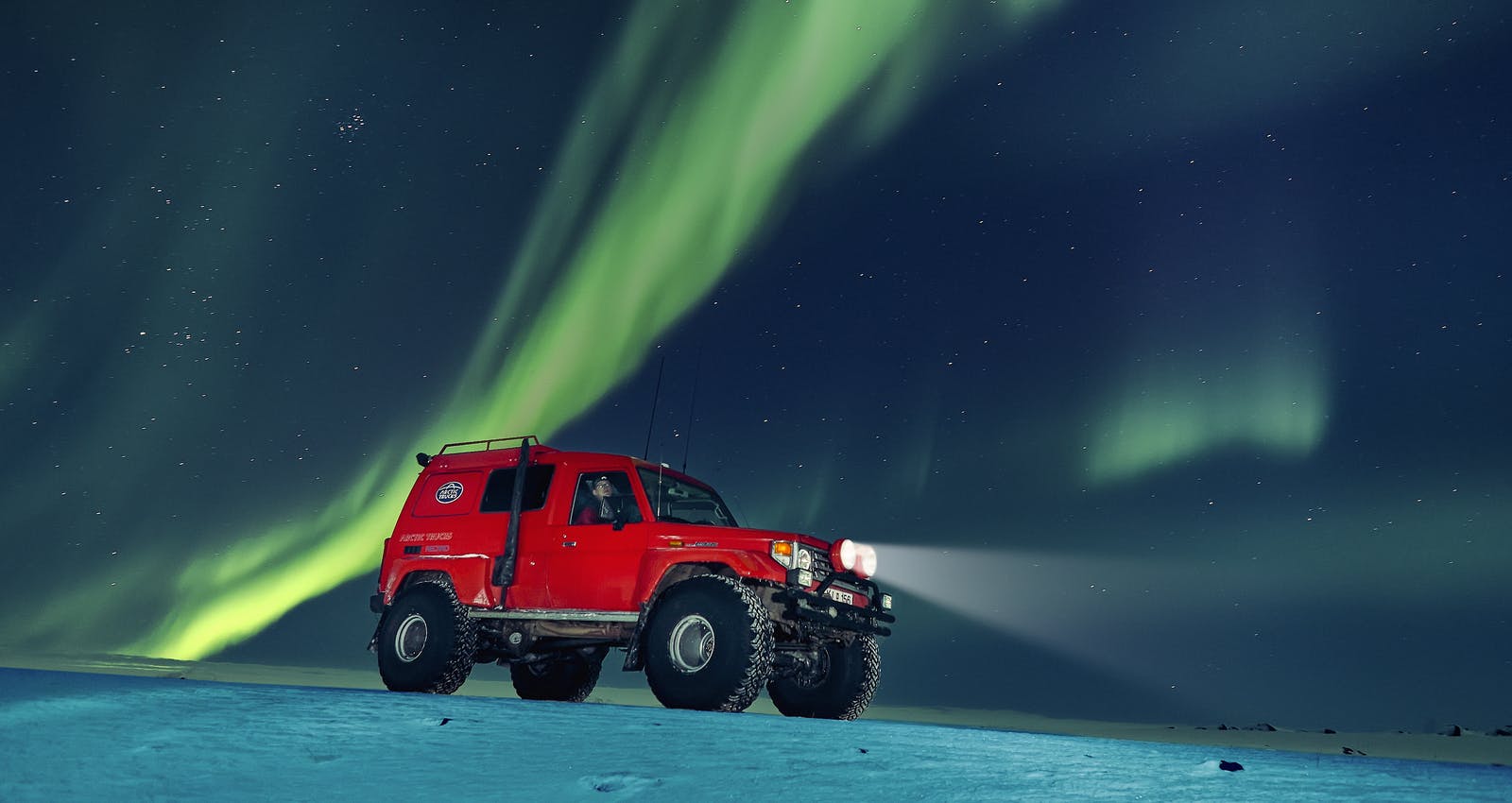
Northern lights can usually be seen between 60 and 75 degrees of latitude, covering not only Iceland, Norway, Finland, Sweden, Greenland, Russia, the US state of Alaska, and parts of Canada. However, although uncommon, auroras can be seen in northern US states, northern England, and Scotland.
Understanding Aurora Activity Levels
The northern lights forecast typically provides information on the expected aurora activity level. Higher values indicate stronger geomagnetic storms and a greater likelihood of visible northern lights at lower latitudes. Northern lights forecasts are given for three days and are consistently updated. Longer-term forecasts based on the 27-day solar cycle are less useful as weather frequently changes in Iceland.
What is the Kp Index?
The Kp index is a common way to measure the strength of geomagnetic activity. It ranges from 0 to 9, with higher values indicating more significant geomagnetic disturbances. A Kp index of 5 or higher is often associated with good Northern Lights viewing opportunities at mid-latitudes.
What are Some Recommended Sources for Aurora Forecasts?
Numerous websites and mobile apps provide real-time and forecasted data for the northern lights. We recommend Perlan’s Northern Lights Forecast which provides real-time space weather data and auroral activity updates, helping users find the northern lights in Iceland. Another great source is IcelandAtNight.
What Should I Pay Attention to with Northern Lights Forecasts?
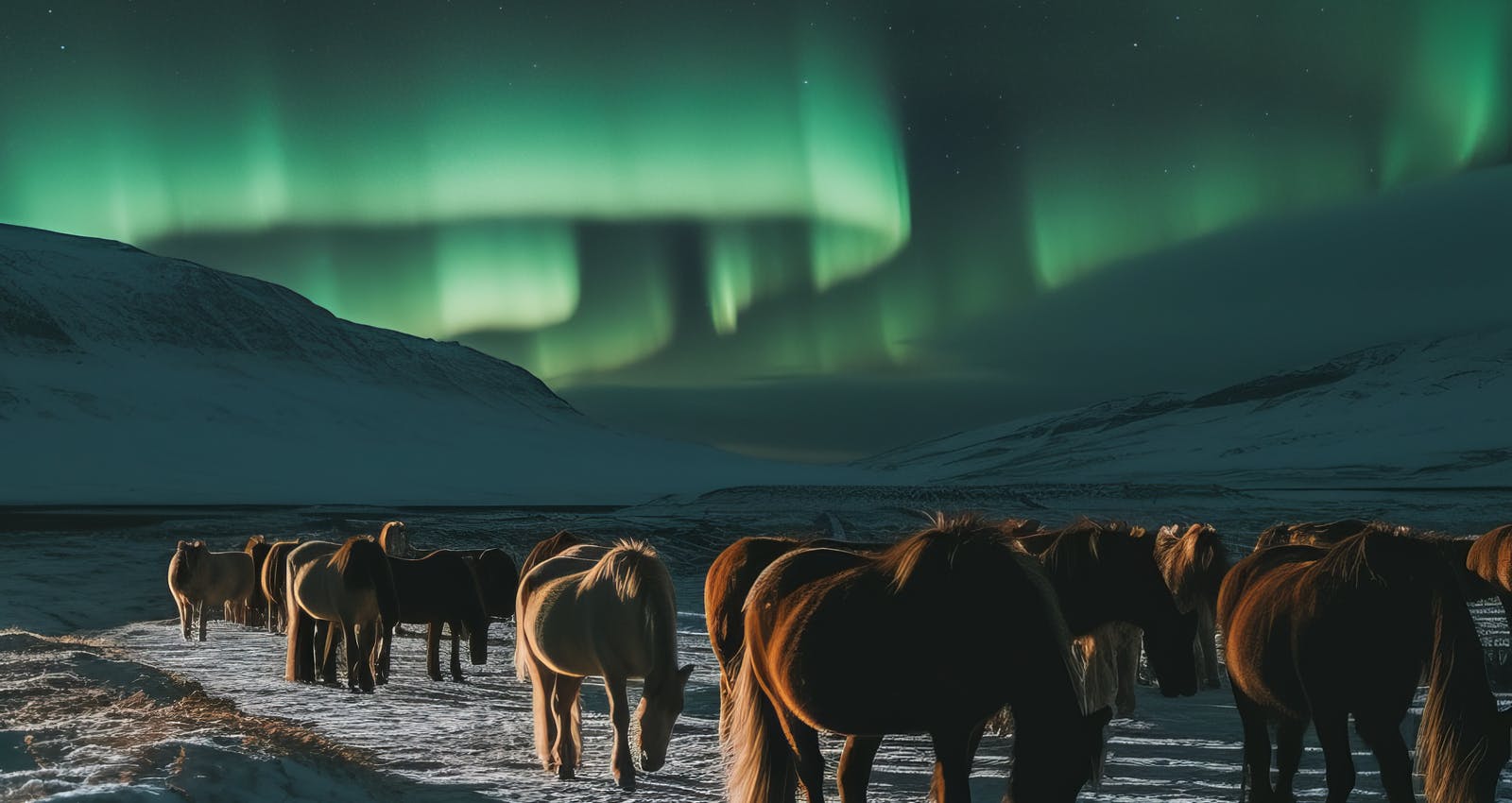
- The forecast may also provide an estimated time window for when the aurora is expected to be visible, such as "between 11 PM and 2 AM."
- Solar Wind Speed: The speed of the solar wind, measured in kilometres per second (km/s), is a critical factor in predicting aurora activity. Higher speeds can increase the likelihood of geomagnetic storms.
- Solar Wind Direction: The direction of the solar wind, especially when south-facing (negative degrees), plays a key role in the visibility of Northern Lights. A south-facing solar wind can better interact with Earth’s magnetic field, enhancing auroral displays.
- Cloud Cover and Weather Conditions: Clear skies are essential for observing the Northern Lights. Be sure to check the weather forecast for the viewing location to ensure that cloud cover won't obstruct your view.
- Alerts and Notifications: Some websites and apps offer alerts and notifications based on your chosen location and aurora activity thresholds. These can be helpful for receiving real-time updates and reminders when the conditions are favourable for viewing.
Where Can I Learn About Northern Lights in Reykjavík?
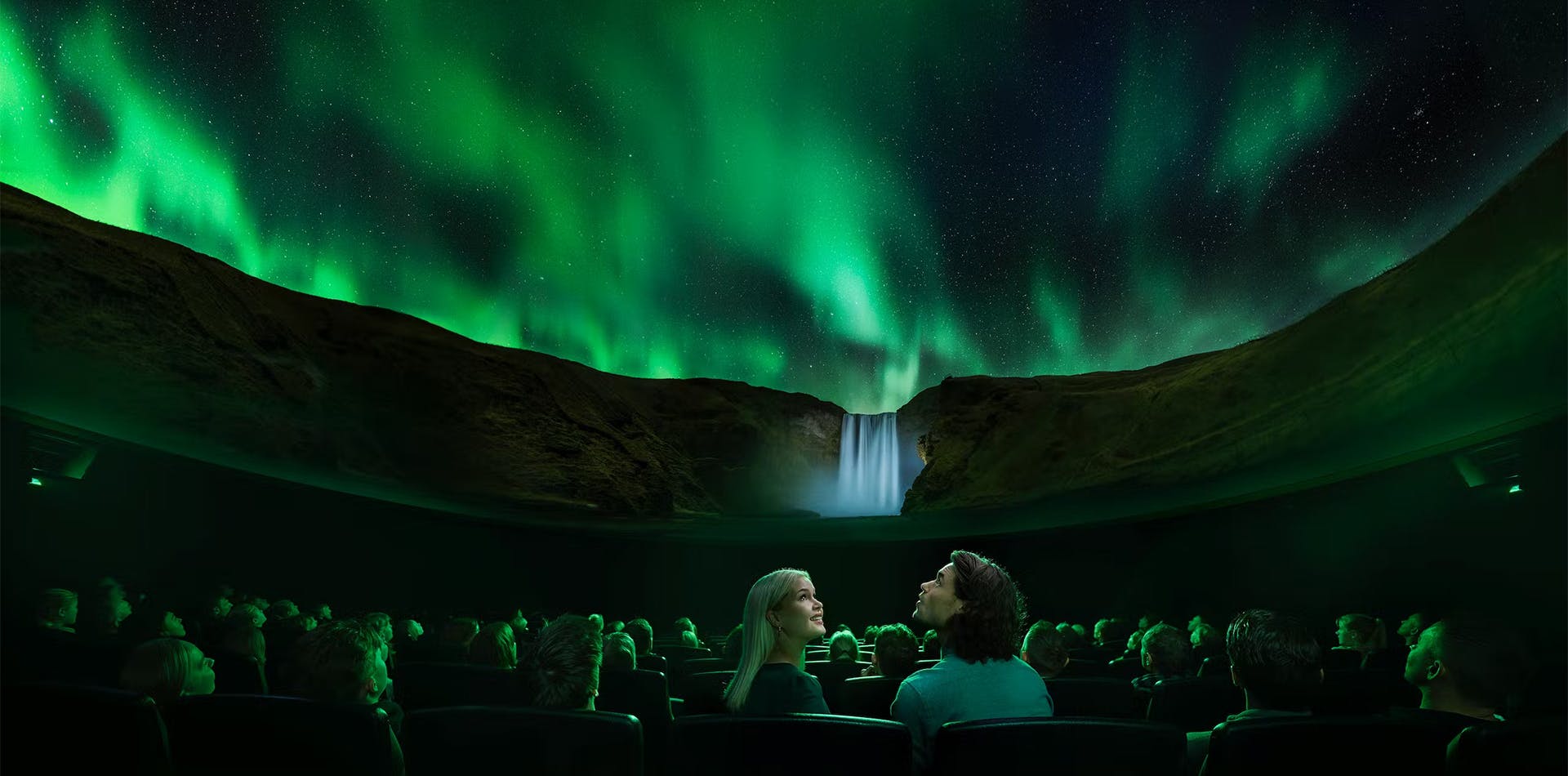
Perlan's Northern Lights Show, Áróra, is a breathtaking film about northern lights. The film includes many stories, combining science and art to create a unique experience for guests. At Perlan, you can learn how northern lights form, hear fascinating tales about them and see fantastic displays. In Icelandic nature and outer space, the northern lights virtually dance around you.
Perlan is home to Iceland's only planetarium and uses a state-of-the-art 8K projection system and surround sound system to bring you the full spectrum of the magical story of the northern lights.
How Can I Increase my Chances of Seeing Northern Lights in Iceland?
The conditions must be favourable, with no cloud cover, some geomagnetic activity and solar wind blowing in Earth's vicinity. If the forecast is good, it is essential to be far from artificial light sources, such as street lamps; you want to be near open spaces. Please remember that nature can be unpredictable, and patience is needed for any northern lights hunt. But, when you get a glimpse, there's nothing quite like the magic of seeing auroras dance and flicker in the sky.
Safety and Preparation
It's important to remember that hunting the northern lights can be a waiting game. Expect to spend a long period of time outside, not moving, looking up at the sky. Since you will be standing out in the cold night, it is essential to choose the proper clothing. Iceland can be a wet and windy country, so a windproof and waterproof outer layer is a must. Underneath, you should be warmly insulated with a wool sweater or thick fleece. Also, bring along a hat, gloves and scarf. Lastly, waterproof boots and warm socks are vital as the ground could have snow.
Also, be sure to bring necessary camera equipment like lenses and a tripod, and please respect Iceland's fragile nature and the local regulations.
FAQ
How accurate are northern lights forecasts?
The weather frequently changes in Iceland, meaning a favourable northern lights forecast can quickly change if there's cloud cover. Always check websites and Northern Lights apps right before heading out for a search in Iceland.
What does a KP Index of 3 mean?
Kp 3 means that our magnetic field is influenced by the solar wind, so there is a chance of very fine auroras. The Kp index is a common way to measure the strength of geomagnetic activity. It ranges from 0 to 9, with higher values indicating more significant geomagnetic disturbances.
Popular tours
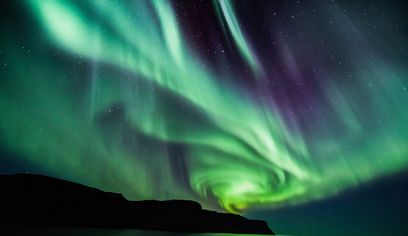
The #1 Northern Lights Tour in Iceland | FREE photos, Homemade Hot Chocolate & cinnamon buns

Reykjavík Northern Lights Cruise

Aurora Basecamp Night pass

Reykjavík Whales & Northern Lights

Northern Lights Tour from Reykjavik, With Photographs, Local Pastrys and Hot Chocolate

DT 310 Private Superjeep Northern Lights

NORTHERN LIGHTS AND STARGAZING (Guided in 10 languages)

GOLDEN CIRCLE AND NORTHERN LIGHTS (Guided in 10 languages)

Aurora Viking - The Private Tour - Northern Lights Tour

Northern Lights w/Aurora Viking - free pro photos - Free Retry – minibus
